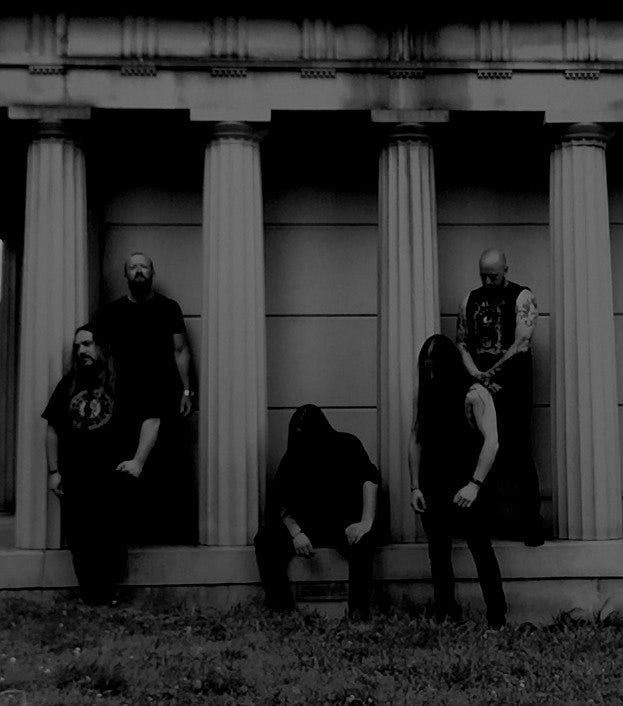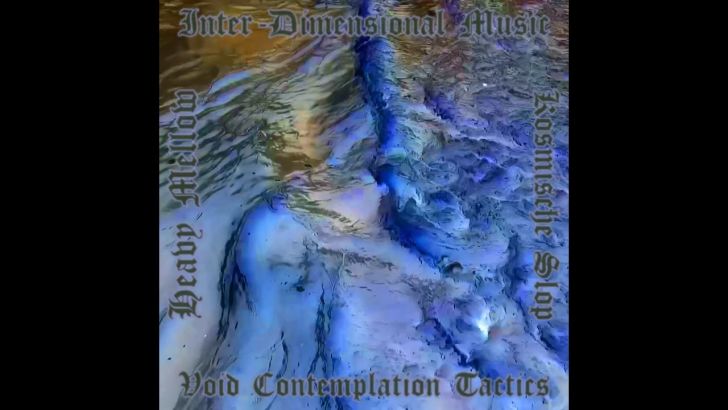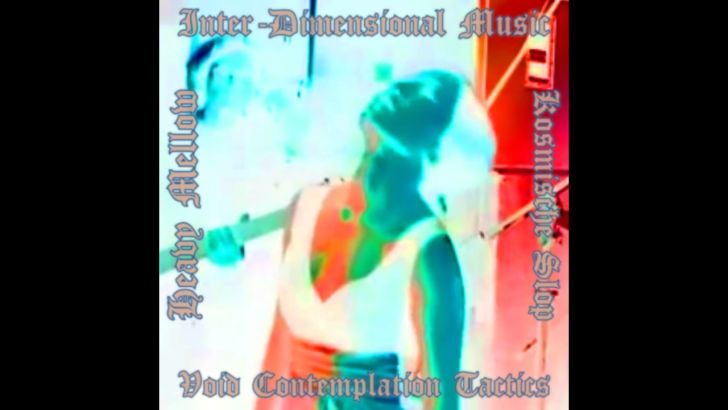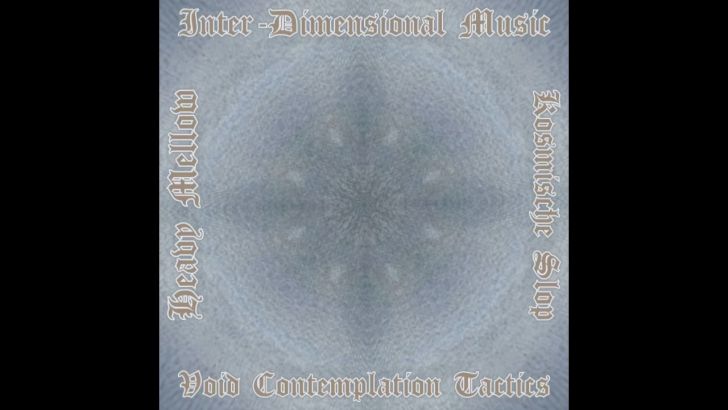Rows of Endless Waves II: Funereal Doom
Considering funereal metal and other hesher dirges as durational awareness practice
In the spring of 2006 my buddy Eric invited me to a bluegrass festival in Northern California. He played fiddle with a touring country band on the bill, and knew the scene well. But I was blown away by the ease and good nature of the gathering: minimal security at the show and the campsite, kids running around, adults being open but responsible with their sacraments, and lots of people hanging out jamming or just taking in the scene. I was writing for Arthur Magazine at the time, and was wondering why our acid folk/heavy mellow world didn’t overlap more with this thriving underground. I’ve never loved bluegrass, but that seemed beside the point given the potential for multi-generational head intersectionality while passing the chalice around a campfire. So why weren’t Brightblack Morning Light, Joanna Newsom, or MV & EE on the bill?
“This music is almost all upbeat,” was Eric’s answer, as we watched boot-scootin’ boogiers gather at the main stage in anticipation of Western swing superstars Asleep at the Wheel’s headlining set. “Hipster folk …”
“New Weird America,” I corrected.
He rolled his eyes. “Whatever you call it, it’s too depressing and slow.”
Grateful Dead is where these two zones overlap, but there’s a disconnect between the jaunty arrangement of “Me and My Uncle” and the song’s Blood Meridian-prequel narrative of a psychotic nephew murdering his dirtbag uncle and leaving his body to rot in the sun.
I had a similar conversation when we went to see Dead & Co.1 at Deer Creek on their 2019 Summer Tour, the parking lot scene being another ecosystem where crust punks, hippies, yoga moms, and golf dads mingle. Deadheads in the lot are nothing if not talkative so it wasn’t long before an elderly hair farmer was asking questions about my Mournful Congregation T-shirt. “I bet those guys don’t sound anything like the Dead,” he said.
ID Music: Dead Sets 2015-2021
I have a complicated relationship with my favorite band, The Grateful Dead. I wrote about this relationship in 2004 for Arthur Magazine, a bohemian culture broadsheet that I had been contributing to for a few years. I was down and out that summer, living in Los Angeles,
“They’re sort of the inverse,” I replied, thinking about the renowned Australian five-piece funeral doom band with three guitar players from this hippie elder’s perspective. “Super long songs with lots of pretty guitars. Only they’re very sad most of the time.” The band is a bunch of guitar virtuosos who could pass for a clique of especially moody and crusty hippies, the sort of Wooks the nitrous guy keeps on hand in case somebody tries gaffling his balloons. It’s easy to make a joke about Mournful Congregation being the Ungrateful Dead: It’s more difficult to find someone who gets the joke.

This is not to say that line-dancing headnecks would be better off scooting combat boots to drop-tuned banjos. Nor to say that people who avoid supposedly dark and/or difficult music are aesthetically or emotionally challenged. But these sounds are a sincere component of my private meditation practice. To my ears, all of these sounds emerge from a kind of psychedelic amniotic fluid.
The Lama Rod Owens language that we’ve used throughout the “Rows of Endless Waves” series about embracing both the light and the darkness is good – and likely unintended – advice for those embarking on medicine journeys, as well as for meditation, yoga, or life in general. Embracing a flow that includes dark, difficult emotions – rather than becoming attached to expectations – is the key to making it through to the other side. The same can be said of sitting through 27-minutes of ambient sludge-gaze like Aldebaran’s Buried Beneath Aeons, as heard on this week’s program.
I selected Buried Beneath Aeons as a slab of funeral doom that evades easy labels like funeral, funereal, and doom. Over a half hour the band moves from the gentle guitar drift of the intro into two extended sequences of more traditional shuddering metal and guttural howling. But it eventually emerges into a gnarled-kind of downcast shoegaze. It’s unquestionably funereal, long-form doom metal, but no sign is ever as complex as the endlessly shifting reality of what it signifies.
This gets at another point from Lama Rod’s language: “We struggle with certain things and the things that we struggle with we just label: dark, difficult.” I tend to blend my Buddhisms as awkwardly as I blend metal and ambient music, so this sent me off to dig up writing about “the place before thinking” from Zen Master Seung Sahn’s Only Don’t Know collection of letters:
Before thinking there is no you, no I, no form, no emptiness. So even to say, "no form, no emptiness” is wrong. In true emptiness, before thinking, all things are just as they are. Form is form; emptiness is emptiness.
This can work as a corollary to what Lama Rod is talking about as far as labeling emotions, experiences, or artworks that we struggle with as “dark, difficult." We choose the words that represent a feeling or emotion that we’re experiencing. This is essential to communicating our experience, but the word will never be able to convey the totality2 of the feeling, whether the word is your name, the name of an emotion, or the name of a type of music.
Words and names can be shortcuts to understanding a feeling, but they can also work as misdirection. Sitting with a feeling without naming it, without explaining it by fitting it into a narrative, can be a revelatory experience. What does sadness feel like if we look for it in the place before thinking, before we give it a name, with all the loaded denotations and connotations that arise from words and letters? It's easier to beat myself up for feeling "depressed" – a character flaw, a pathology to be remedied – than when I'm focusing instead on the physical sensations that I reduce to "depressed." Sometimes I'm depressed because a sad thing has happened, or I'm depressed because I'm on a bad luck streak at the dopamine casino. Other times I'm just over-stimulated or exhausted from an otherwise positive, life-affirming conversation.
Approaching music like funeral doom as something other than an intentionally miserable metal subgenre allows me to experience the sound with fewer expectations. Just because the song is called “A Picture Of The Devouring Gloom Devouring The Spheres Of Being” doesn’t mean you’re wrong for feeling elation rather than hopelessness when it comes up in the rotation. Or for that matter, it doesn’t mean that sitting with hopelessness can’t lead to a deeper sense of empathy with fellow sufferahs.
The fact that we all suffer means that we are all not alone. A deeper awareness of any difficult experience – being fidgety during morning meditation, listening to music intended as a conduit for despair, or the feeling of dread that comes over me as I recognize that one of our beloved cats is approaching his final days – open the door to compassion.
I can imagine Asleep at the Wheel receiving a warmer welcome at the Brattleboro Free Folk Festival than at Kill-Town Death Fest. I can’t say if Old or New Weird America would react as enthusiastically to Mournful Congregation’s elegiac “Suicide Choir” as the crowd at Migration Fest II in 2018, but there’s a better chance if the flannel clad homesteader families don’t know the name of the song. Or the band, for that matter. I do know the shoegaze label makes more sense if your spouse collects Bell Witch vinyl and you accidentally play one of their ethereal hesher dirges at 45 rather than 33rpm.
As always, I am stoked that you have opted to share a few moments of screen time with me. I am honored by those of you who have signed up to receive more of these newsletters. Maximum gratitude to those kind souls who help offset the monthly Bandcamp bill with a paid subscription. And a heartfelt “fare thee well” to anyone who practices the self-care of smashing that unsubscribe when these transmissions no longer suit your fancy. It’s a pleasure and a privilege to know you are now or once were on the receiving end of these wi-fi and FM frequencies.
blessing up and blessing down,
Daniel
If you know anyone who might find value or otherwise enjoy Void Contemplation Tactics or Inter-Dimensional Music, please pass it along. It means a lot to me!
Word of mouth is my primary form of promotion. My reach is limited on social media, which I’m increasingly convinced is a good thing. As Dōgen's teacher told him, “You don't have to collect many people like clouds. Having many fake practitioners is inferior to having a few genuine practitioners. Choose a small number of true persons of the way and become friends with them.”
If you’d like to support these projects with a one-time donation, you can also drop some ducats in the brand new tip jar.
Inter-Dimensional Music 20230512
Rows of Endless Waves II: Funereal Doom
For this week's practice, it's the second installment of “Rows of Endless Waves,” our ongoing consideration of funeral doom's funereal heavy mellow dirges in the context of durational awareness practice.
Coming up with an hour of funeral doom is easy, given that song lengths greater than 10m is one of the few things that all funeral doom has in common. It was more difficult trying to follow through on the Ungrateful Dead concept. While there’s plenty for Deadheads to enjoy in Mournful Congregation, Corrupted, or Bell Witch’s spiraling guitar lines, I ran out of patience trying to find ways to knit “Looks Like Rain” and “As I Drown in Loveless Rain” together into this week’s broadcast.
I’m guessing most people involved will agree that Pink Floyd is a better antecedent for such melancholy long-form psychedelia as heard on today’s show, even if they’ve been a poor fit for bluegrass festivals since Syd left the band. I’m much less familiar with their discography compared to the Dead’s but after poking around the gloomier corners of their catalog I can confidently say that “Nightmare” as played at the September 1969 Amsterdam date on the mystical The Man and The Journey tour, is the most funeral doom of Pink Floyd songs. It’s a heavier version of “Cymbaline” from the sublime and sometimes overlooked post-Syd pre-Dark Side of the Moon soundtrack album More. As far as I can tell there’s no official release of this show, but you can find a surprisingly clean bootleg online if you know where to look.
Over the next hour, we'll hear this most funereal of Pink Floyd songs, the most Pink Floyd of funeral doom songs, and classic funeral doom translated into heavyweight blues and blackened shoegaze dialects by Samothrace and Aldebaran.
Listen for more language from Lama Rod Owens on the knowledge gained by embracing such dark, difficult emotions as these throughout the broadcast.
artist – work
Samothrace – Awkward Hearts (Live at Roadburn 2014)
Pink Floyd – Nightmare (Live in Amsterdam, 1969)
Aldebaran – Buried Beneath Aeons
Mournful Congregation – The Bitter Veils of Solemnity
☸️ Lama Rod Owens
You can help make Void Contemplation Tactics a more emotionally rewarding and/or slightly less unprofitable project by sharing this post, subscribing for free, subscribing for money, dropping loose change into the tip jar, and/or purchasing music from the artists we play on the Inter-Dimensional Music airwaves. Tell them where you heard their tunes if you want to go the extra mile! Breathe deep in the Bandcamp library.
And thank you.
I guess because the band is all very old except for John Mayer who is very laid back – and actually kind of a good fit? – people sometimes refer to the Dead & Co. simulation of Grateful Dead as “Dead and Slow.” Which is, for my purposes, great. I don’t always love the fast and showy deedly-deedly whether it’s metal or jam bands. For examples, we can turn once again to Hilgart’s invaluable Save Your Face mixtapes: Shortlist: Dead & Company - New England, September 2021
This semiotic concept has been helpful in understanding the elusive Zen concept of “non-self.” It’s not that the idea of who you are doesn’t exist, but that the whole of your being can never be reduced to something as finite as “self.”








